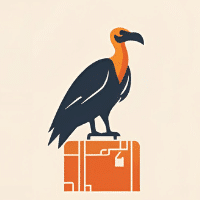Guatemala is an up and coming travel destination and one of the most beautiful countries I have ever been to. It is Central America’s most populous country, the center of the Mayan world, and full of culture and natural wonders. It was also one of our five cheap international destinations to visit this Spring and there are flights to Guatemala City from plenty of US cities. Given how fun and accessible it can be, we’ll discuss how to spend one week in Guatemala.
We’ll focus on the central part of the country, which is most accessible. While there are plenty of things to do, it’s best to focus on one region with only one week in Guatemala. A lot of the country’s highlights are located within a few hours drive from Guatemala City anyway. That said, here’s how to spend one week in Guatemala:
One Week in Guatemala – Antigua: Two Days
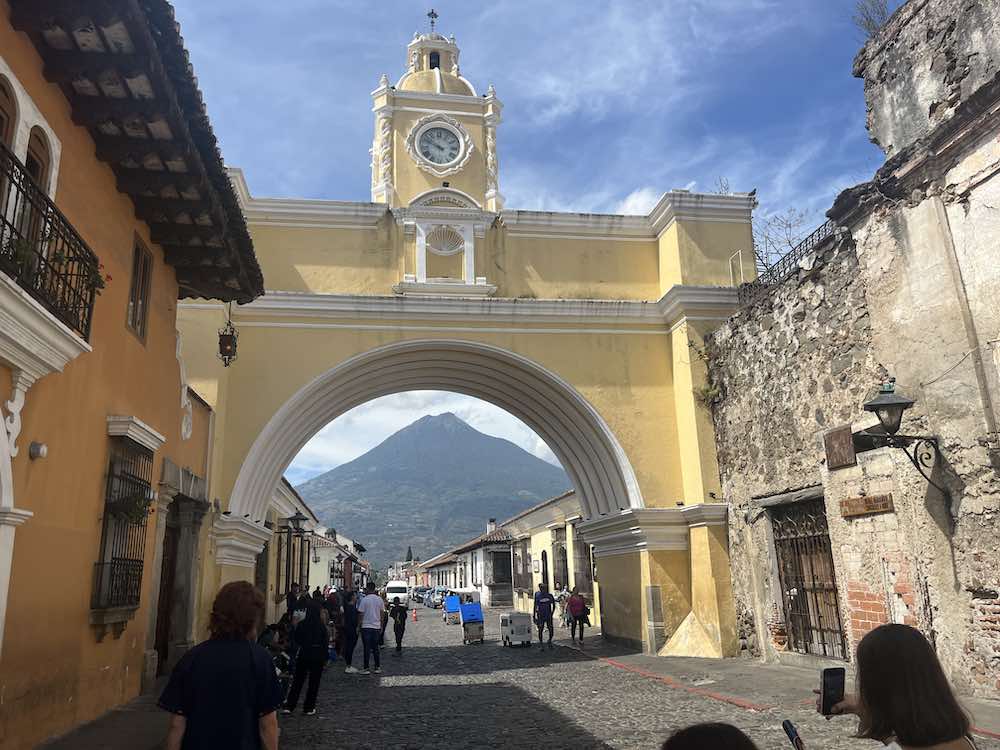
Arriving/Where to Stay
Once you arrive at Guatemala City’s La Aurora International Airport, you can take either a shuttle or Uber to Antigua. A shuttle should be somewhere from $15-20 per person. An Uber will probably cost around $55. Note that 1 USD is equivalent to 7.67 quetzales as of late May 2025. The trip to Antigua will likely take between an hour and two hours, depending on traffic.
There are plenty of places to stay on Booking.com for under $25 a night for two people. Antigua also attracts a lot of backpackers, meaning there are plenty of hostels. Somos, Tropicana and Casi Casa are a few of the most popular options.
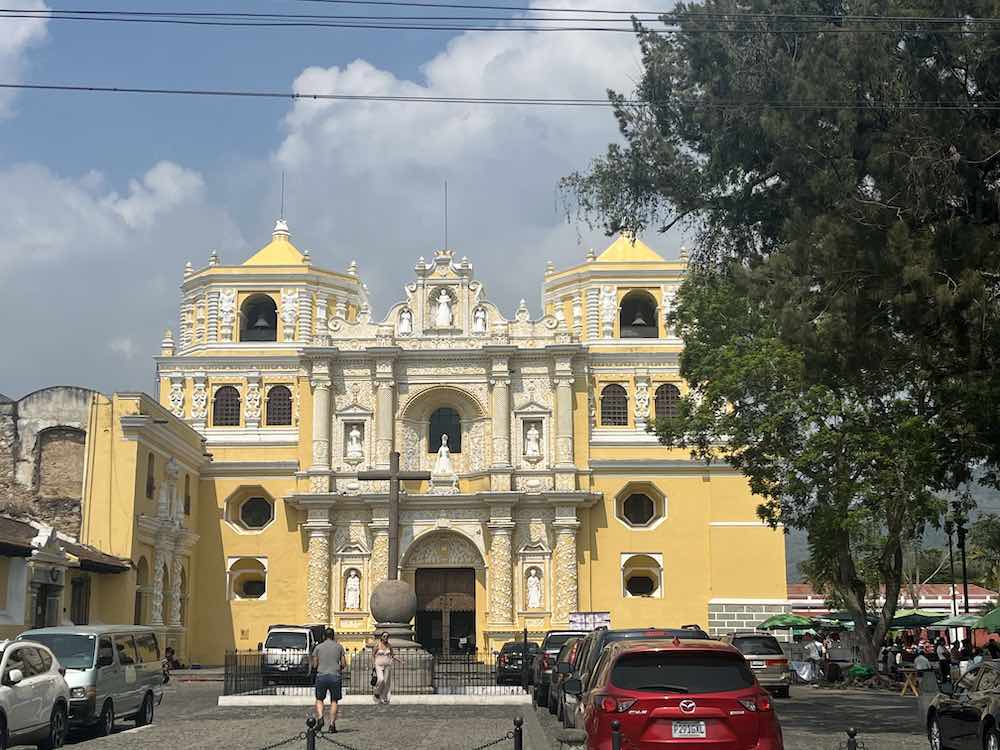
Things to Do
Antigua is one of the best-preserved colonial cities in the world and is a UNESCO World Heritage Site. That makes it an essential stop during one week in Guatemala. Everywhere I walked in the city center, I was impressed by the architecture and how quaint it felt despite being a major tourist destination.
Antigua is also surrounded by three volcanoes, very walkable and has a handful of iconic sites to check out. The most famous of which is the photogenic Arco de Santa Catalina, which you can see one of the volcanoes (Volcan de Agua) through.
The nearby Iglesia de la Merced is an ornate yellow baroque church which is worth a visit. Heading further north, you can hike up to Cerro de la Cruz for a panoramic view of Antigua.
In the middle of town, Antigua’s main square, or Central Park, is a bustling spot and a great place for people watching. Around the square, you can check out the ruins of the San Jose Cathedral and the free National Art Museum of Guatemala.
Also make sure to check out Tanque La Union, a historic spot where locals used to wash their clothes during colonial times. In the same area, you can head to the ruins of the Convent of Santa Clara, which is one of the most beautiful places in the city. The Museo del Hermano Pedro is another popular former religious site to explore.
In the western part of the city, there’s an artisan market where you can find traditional Mayan clothing and other souvenirs. Directly north, you’ll find Antigua’s Central Market, which has fresh produce and prepared food. El Carmen is another artisan market which is closer to the center of Antigua.
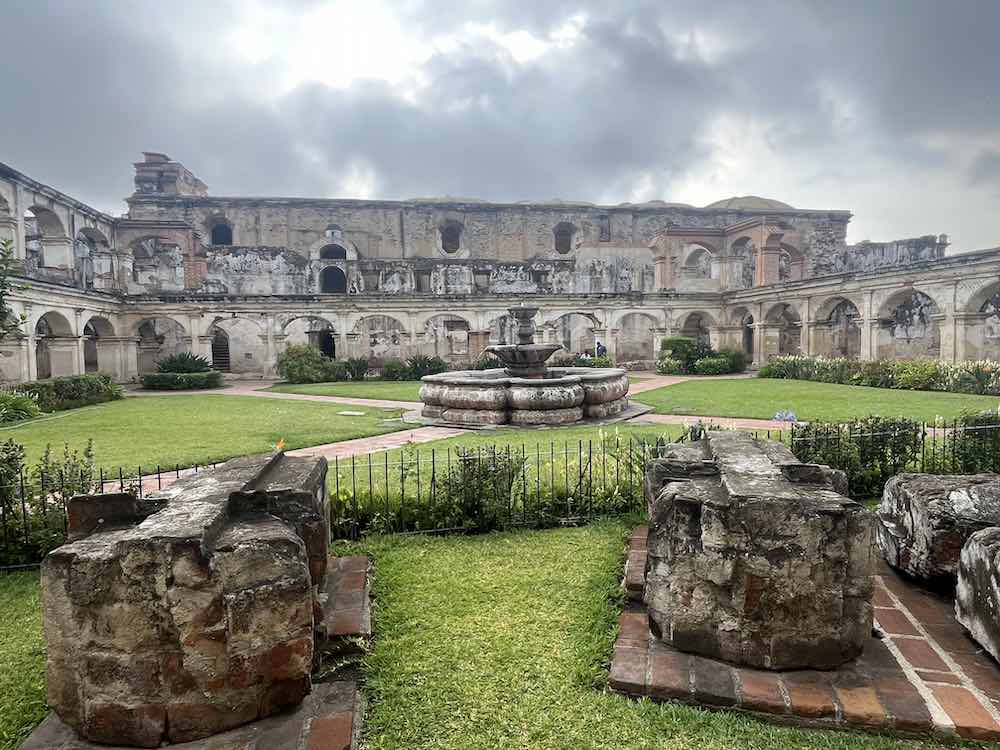
Where to Eat
There is a bunch of delicious looking street food directly outside of Iglesia de la Merced. Plus, there’s even more local food at Antigua’s Central Market. At Comedor Las Canches, within the market, you can eat a three course meal for just 25 quetzales (~$3.25). They have local dishes like pepian, a thick meat stew served with vegetables and tortillas.
Cafe Condesa is right near Central Park and was by far my favorite place to eat breakfast at in the city. They have traditional Guatemalan and international breakfasts which both come with fruit and coffee or tea. The Torre Chapina was absolutely delicious and comes with three tortillas topped with beans, avocado, two fried eggs and ranchera sauce. Cafe Condesa also has a Sunday buffet from 7 a.m. to 1 p.m. for 115 quetzales, which is very popular.
Walk a few minutes away from the Convent of Santa Clara and eat at Rincon Antigueno, which specializes in traditional Guatemalan food. The grilled chicken and tamales really hit the spot and I went multiple times during my time in Antigua.
Along with the previously mentioned restaurants, Antigua has a lot of international options as well. I particularly liked El Bowl, which had Middle Eastern, European and Latin American inspired rice bowls for reasonable prices. Santo Gyro was also solid if you happen to be in the mood for Greek food.
Nightlife/Other Activities
Meanwhile, El Barrio is a lively rooftop bar with a mix of locals and tourists. For a more relaxed vibe, head to Antigua Cerveza: El Bosque, which is a beautiful beer garden with multiple food vendors. They have games like cornhole and bocce that you can play for free as long as you order something.
I managed to get a good workout in at Antigua’s Gym, which charges 35 quetzales for a day pass.
One Week in Guatemala: Acatenango Volcano Hike – 1 Day
Hiking up to the peak of the Acatenango Volcano was one of the travel highlights of one week in Guatemala and, frankly, of my life. Standing near the crater, I could see the nearby Volcan de Fuego erupting and an unbelievable sunrise. If you splurge on one thing in Guatemala I’d highly recommend it be on this hike.
The hike is no joke but if you’re an experienced hiker you should have no problems. The altitude can be a problem for some, as the crater is at 13,000 feet, but you get plenty of breaks if you go with a tour group.
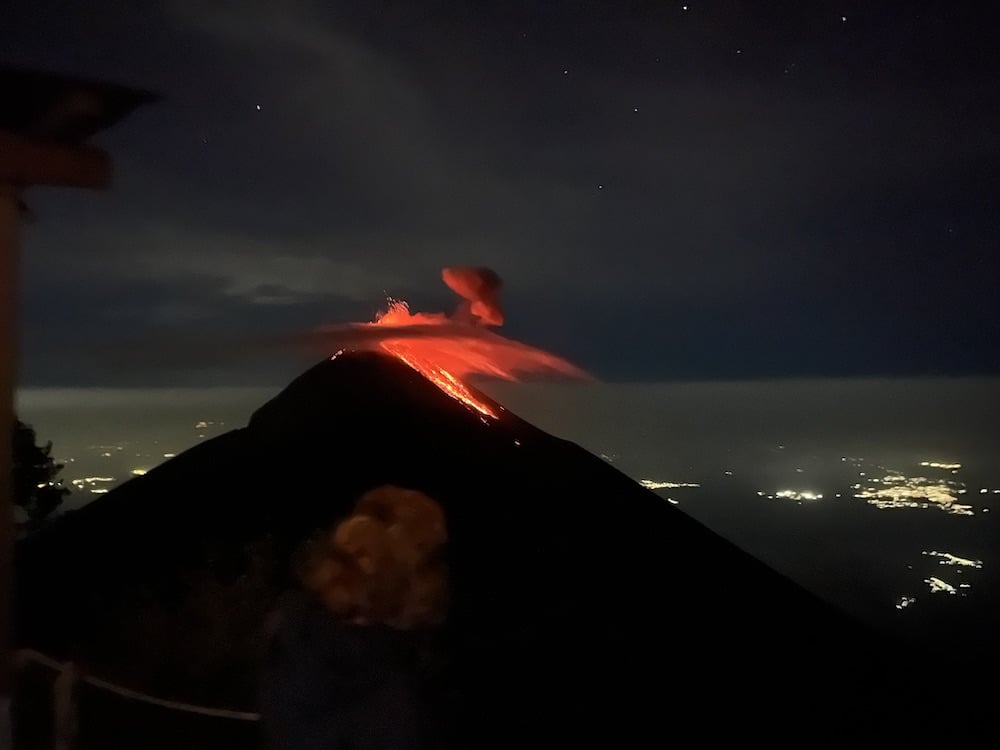
Hike With Tropicana Hostel
Plenty of companies offer tour packages for the overnight hike and my friends and I went with Tropicana Hostel. Their basic package starts at $89 but we went with the $109 VIP one and it ended up being a great decision. With the VIP package, you can see Volcan de Fuego erupting at night from your room. We also got to leave a couple hours earlier than the other group, which allowed us to spend more time at base camp, which has breathtaking views.
We met at the hostel at 6:45 am to eat breakfast and left around 7:45 am to start the hike. It can get incredibly cold on top of the volcano and thankfully Tropicana’s package includes three items of clothing to rent. They also provide four liters of water, one of which you must give to the guides to cook dinner. So, I’d recommend taking an extra liter to drink.
We arrived at the trailhead at 9:00 am and our guides were advertising walking sticks, headlamps and ponchos for sale, which is the only part of the tour I didn’t like. If you have a flashlight, you should definitely bring it for the sunrise hike, though.
Initial Ascent
We started the hike by 10:00 am and took plenty of breaks, which made the hike much easier than I had anticipated. Back at Tropicana they gave us a lunchbox with a chicken wrap, apple, granola bar and chocolate muffin to bring up the mountain and we ate around 12:30 pm. We got up to the base camp near the summit of Acatenango by 2:45 and it was unfortunately quite cloudy so we couldn’t see nearby Volcan de Fuego at first.
We had a ramen noodle snack that we also had to carry up the mountain ourselves and the weather started to get quite cold by 4:00 pm. Thankfully, the guides made a fire and we ate a chicken and vegetable dinner around it, around 6 pm.
They can also cater to people with dietary restrictions. While I felt Tropicana provided an adequate amount of food, I was also happy that I brought snacks because I burned a literal ton of calories hiking up to base camp.
You’ll also get hot chocolate and roast marshmallows over the fire before heading to sleep. Because the weather was cloudy, we were ready to give up on seeing an eruption, which usually happens every 15 to 20 minutes.
However, as we were getting ready for bed, we heard shouting from other people in our tour group outside our cabin and things miraculously cleared up. We saw a full eruption with lava quickly and surreally flowing down the mountain. These continued every 10 minutes or so until we decided it’d be wise to head to sleep around 9:30, given we had to wake up at 3:45 am for the sunrise hike to the peak.
Sunrise Hike to Acatenango Crater
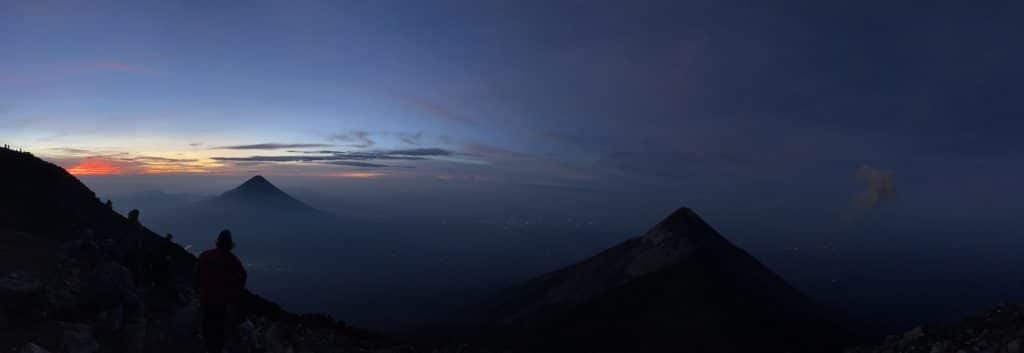
The steep hike to the crater took about an hour from base camp and we saw a bunch of eruptions along the way. Once near the crater, you can see both Volcan de Fuego and the inactive Volcan de Agua. It was a relatively clear morning, which allowed for panoramic views and amazing photo opportunities. Once the sun is up you’re unable to see lava from Fuego, only ash clouds.
After hiking back down to base camp, we ate a small breakfast of oatmeal and banana bread and quickly gathered our things to start our descent. This is where having adequate footwear really comes in handy and you are able to rent hiking shoes at Tropicana. People in trainers were slipping down the mountain but the descent takes about half as long as the way up.
We managed to get back down to the trailhead at around 10:30 and were back in Antigua by 12 pm. All in all, this was the highlight of one week in Guatemala.
One Week in Guatemala: Lake Atitlan – Four Days
After getting back from the Acatenango hike, go chill out at Guatemala’s beautiful Lake Atitlan. You can catch shuttles from Antigua to Panajachel, which take somewhere from 2-3 hours and cost around $15. Lake Atitlan is one of the most beautiful lakes in the world, as volcanoes dot the landscape. Even though it has been built up for tourism, the Mayan culture is still incredibly strong in the area. Signs and restaurant menus are frequently in Mayan as well as Spanish.
Jaibalito/Santa Cruz La Laguna
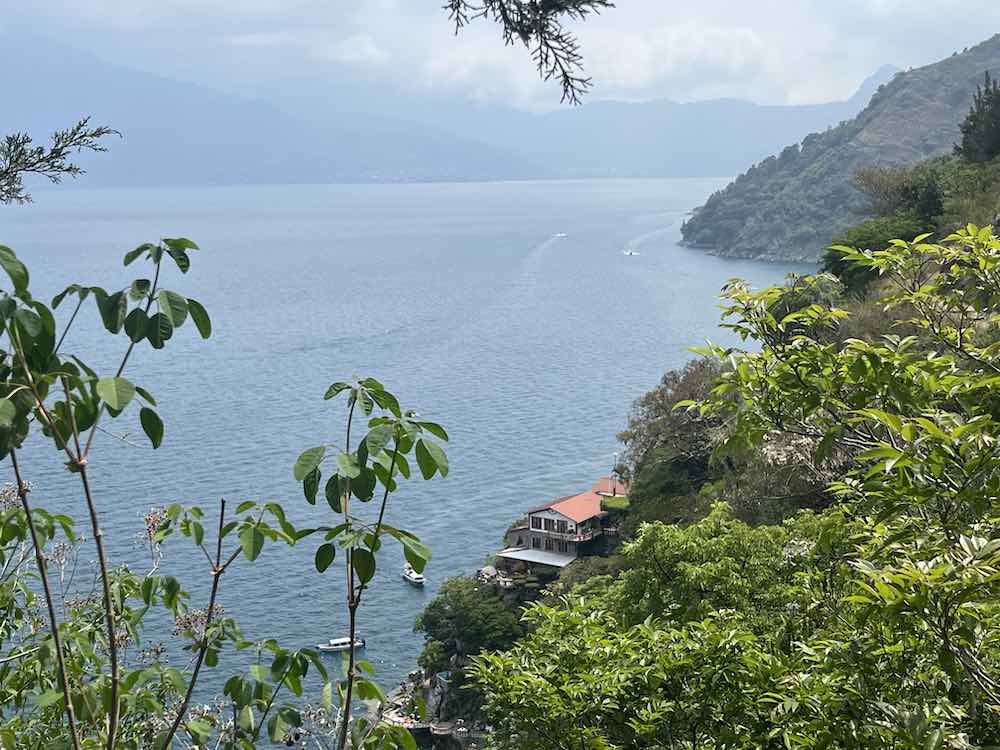
Once you arrive in Panajachel, head to the dock and catch a public speedboat, which costs 25 quetzales no matter your destination. Just tell the captain where you’re going and he’ll let you know where to disembark.
One of the most beautiful places to stay on Lake Atitlan is at La Casa del Mundo, which is in between the town of Santa Cruz La Laguna and village of Jaibalito. Rooms start at 490 quetzales and even if you don’t stay there you can still get a day pass (50Q) to enjoy their facilities.
They have a bunch of lounge chairs, hammocks, swimming spots and great views of the lake. During the offseason, you may be able to enter without paying for a day pass. If you’re looking for somewhere cheaper to stay, consider the Free Cerveza Hostel in Santa Cruz, which is a backpacker’s paradise.
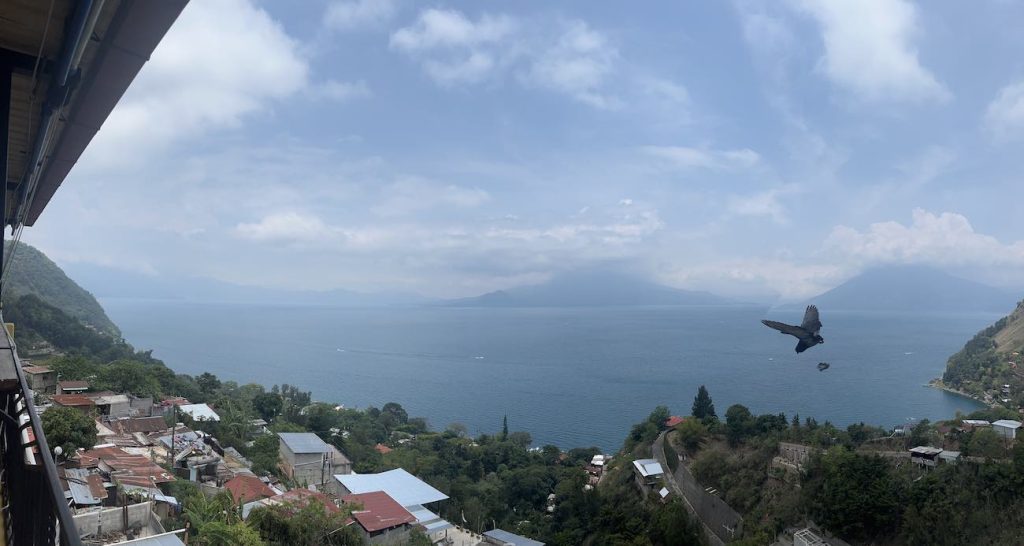
We ended up staying in Jaibalito at Art & Coffee hostel, which was a very laid back option. Jaibalito is quiet and Bistro Indigo has great breakfast and views of the lake. We also ate dinner at Restaurante Tres Tenedores multiple times. The pepian and tamales were excellent.
You can walk from Jaibalito to Casa del Mundo in 15 minutes but consider downloading offline maps on maps.me to find the way. Similarly, the hike from Jaibalito to Santa Cruz has beautiful views the whole way through. It takes about 45 minutes to complete.
In Santa Cruz, check out Cafe Sabor Cruceño for unparalleled views of the lake and a solid lunch. In Santa Cruz you can also rent kayaks and paddle boards to take on the lake. Once you’ve spent a couple of days in the area, you can head to the other side of the lake.
San Pedro La Laguna/San Juan La Laguna
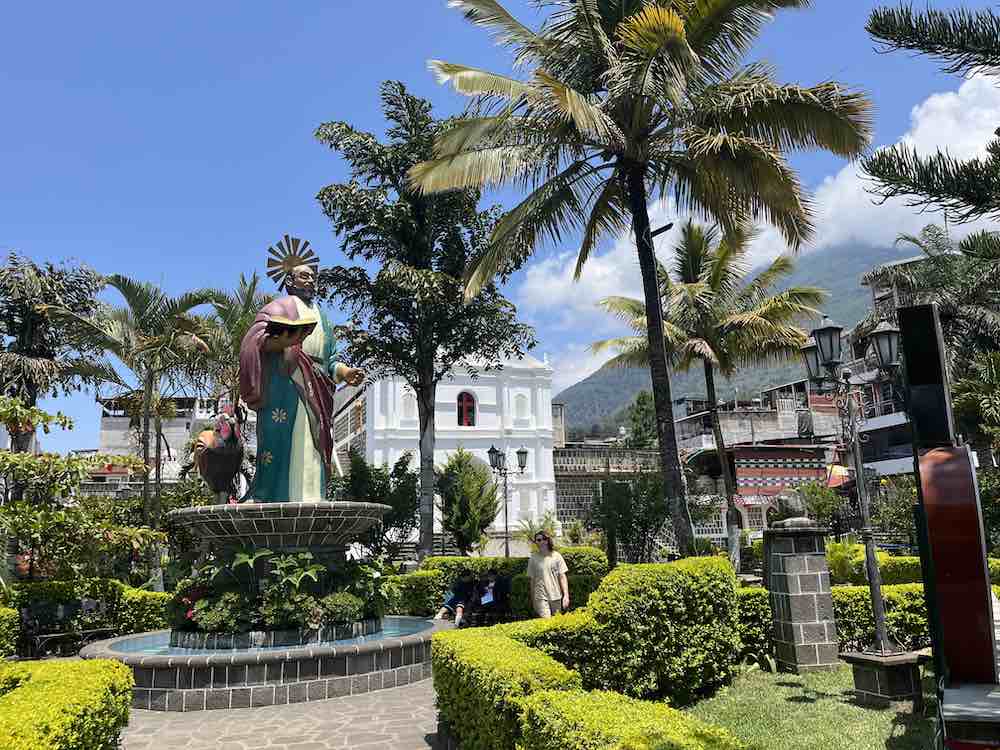
San Pedro La Laguna is a popular spot for backpackers and is about 25 minutes away from Santa Cruz by boat. We immediately noticed how many signs in town were in Hebrew. Apparently, there’s a large Jewish community and there are some great international restaurants as a result.
Pita Sabij had excellent pita sandwiches and falafel plates. Meanwhile, the Moroccan food at Alma was superb. Santa Cruz is known as a party spot but there are other things to do. Head up the hill, to the center of town, for the church and Parque La Puerta Hermosa. Then, check out Vista de Pajaro, which views of the city and lake below. Plus, you can support local artists by buying some of their small souvenir paintings.
San Pedro also ended up being the first suitable place to run. There’s one main road that goes east for a few miles. At the end of the road, you can hike down to Playa La Finca. We also paid only 300 quetzales total for four people to enjoy the hot and cold pools at Los Termales for 90 minutes, which was a relaxing experience.

If you have more time in the area, I’d recommend heading to San Juan La Laguna. You can take a five minute boat ride from San Pedro or a 35 minute hike there. The indigenous people who live around the lake are known for textile production. So, San Juan has plenty of local clothes for purchase.
There are also cool murals and vibrant streets in San Juan. Check out Calle de los Sombrillas, with umbrellas hanging overhead. Calle de los Sombreros is also worth a quick stop. Meanwhile, Casa Cultural Kojajaay Museum receives great reviews and has plenty of Mayan artifacts.
One Week in Guatemala: What’s Next?
You certainly don’t only have to spend one week in Guatemala. Catching a flight from Guatemala City to Flores is a popular way to continue your trip. Flores is an island on Lake Peten Itza and is a gateway to the famous Mayan ruins of Tikal. Tikal is breathtaking, even when compared to some of the top archaeological areas in Mexico, like Palenque and Chichen Itza. After Tikal, you could head into nearby Belize, which has famous ruins of its own at Xunantunich.
After spending one week in Guatemala, you could also start a longer central America trip. There are plenty of companies in Antigua which offer buses to destinations in El Salvador and Honduras. El Salvador, while controversial, has become a lot safer for tourists in recent years. Playa El Tunco and Volcan de Santa Ana are two of its most iconic destinations.
